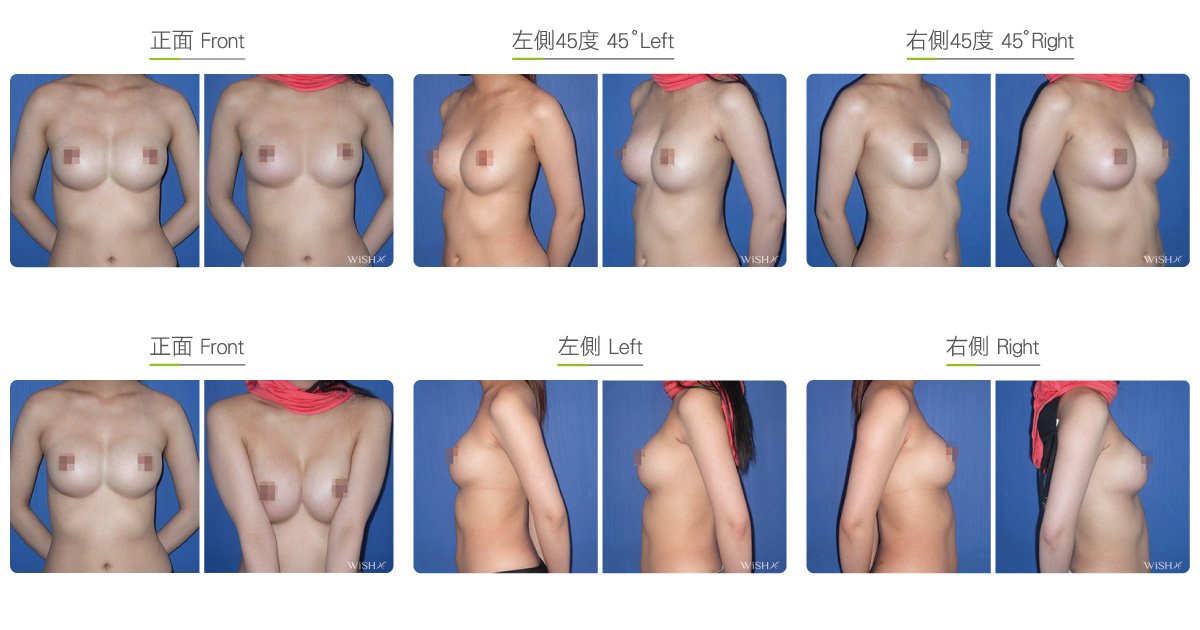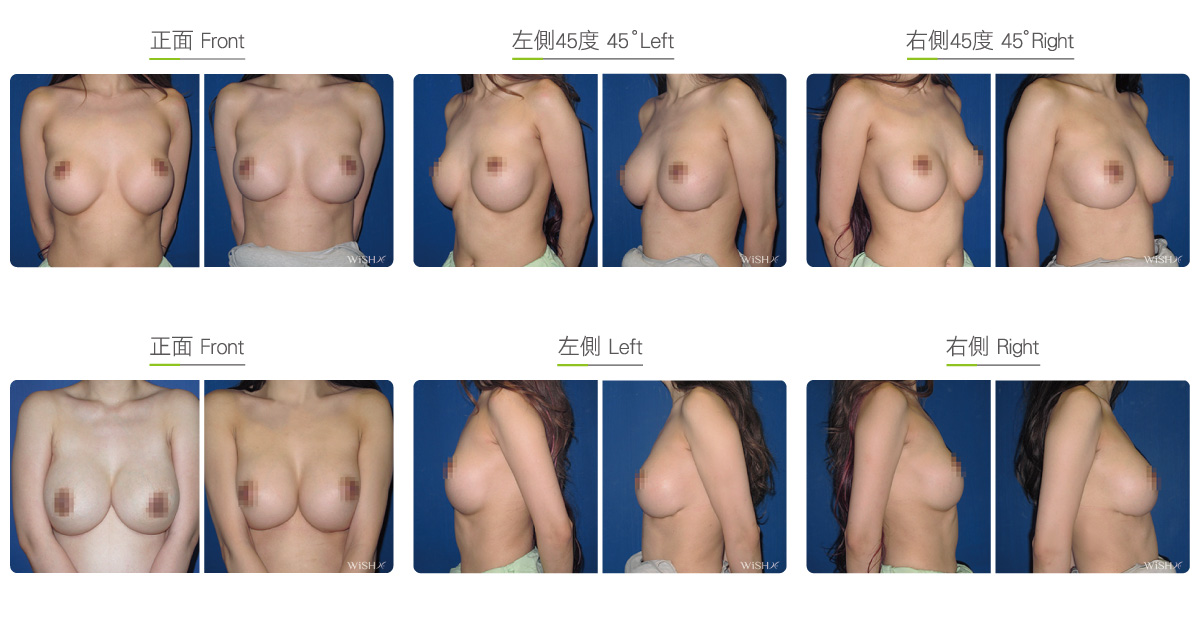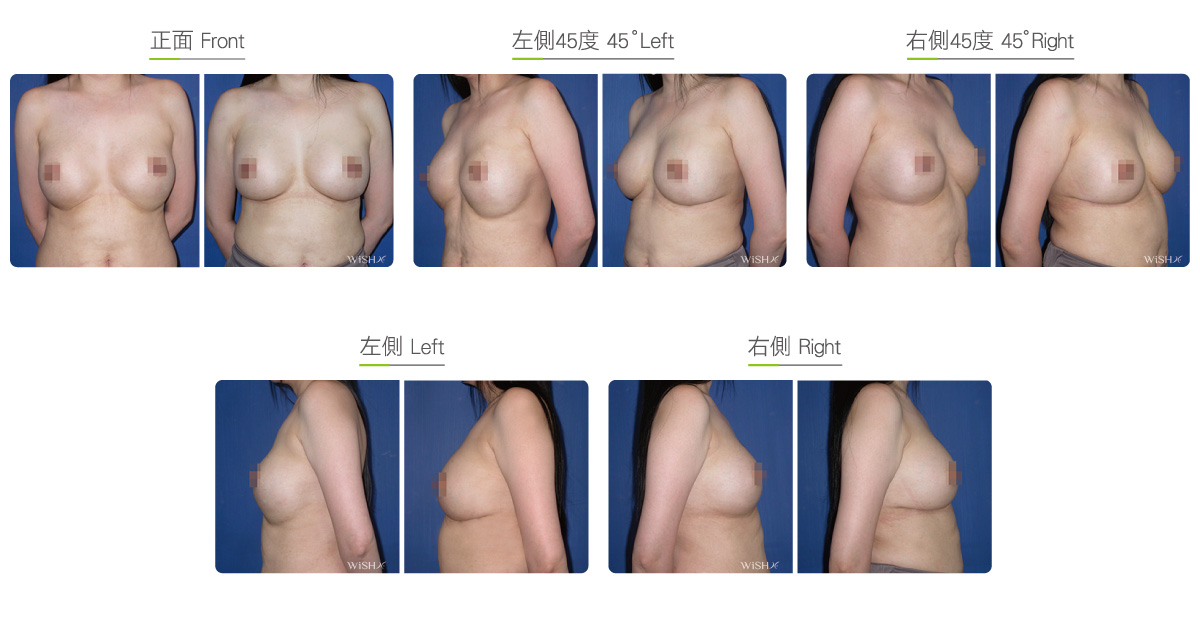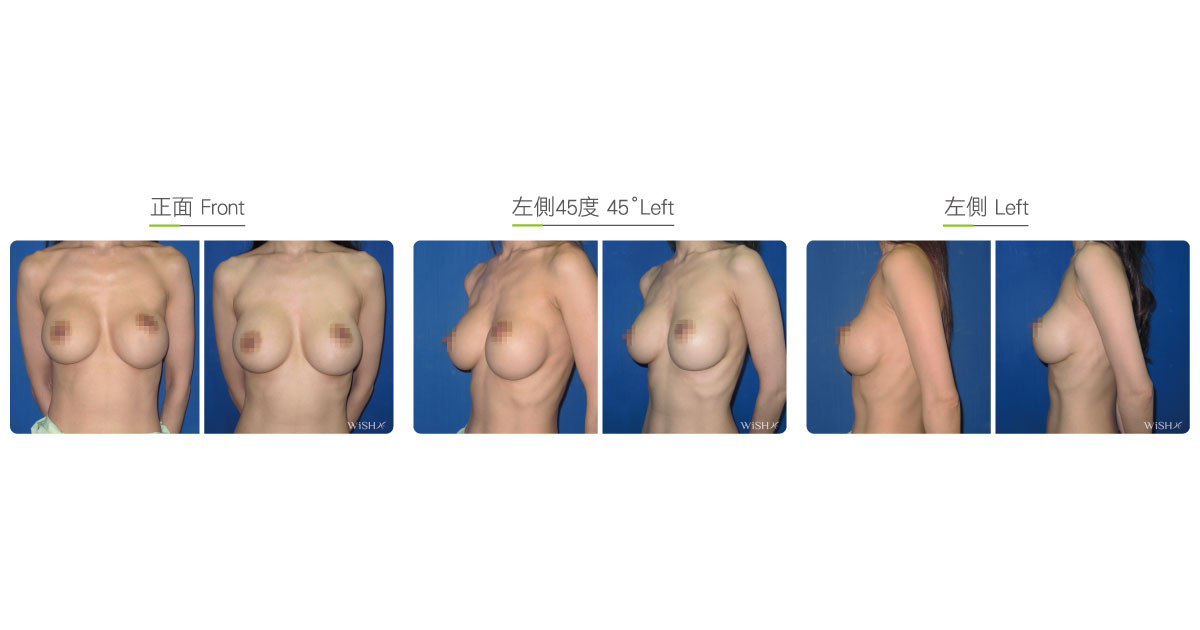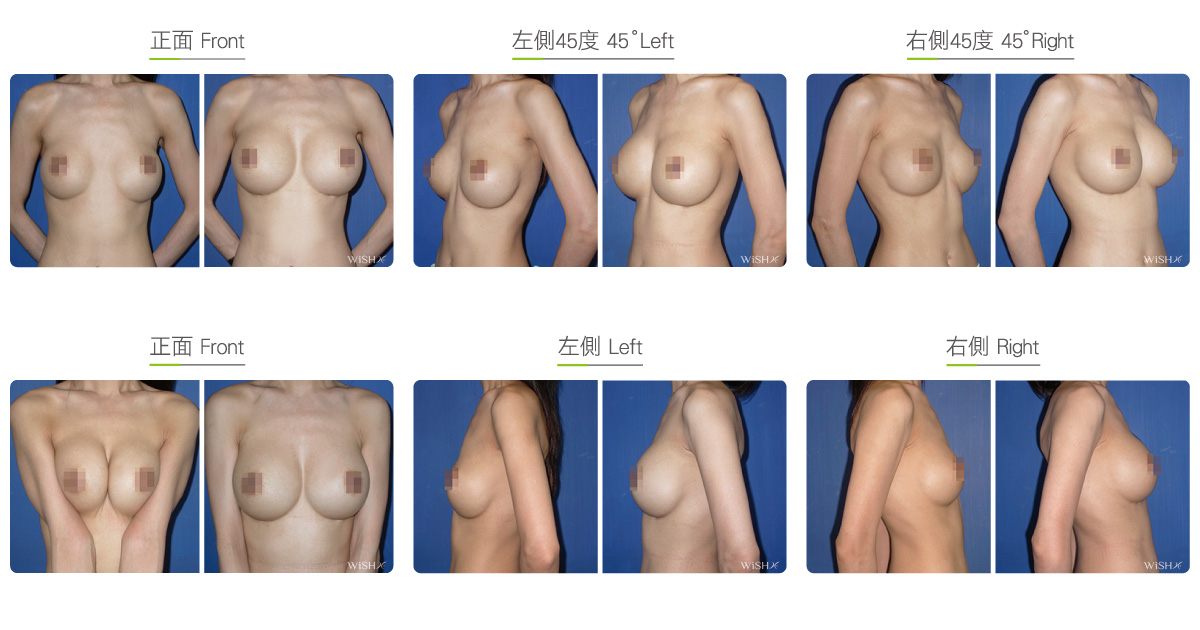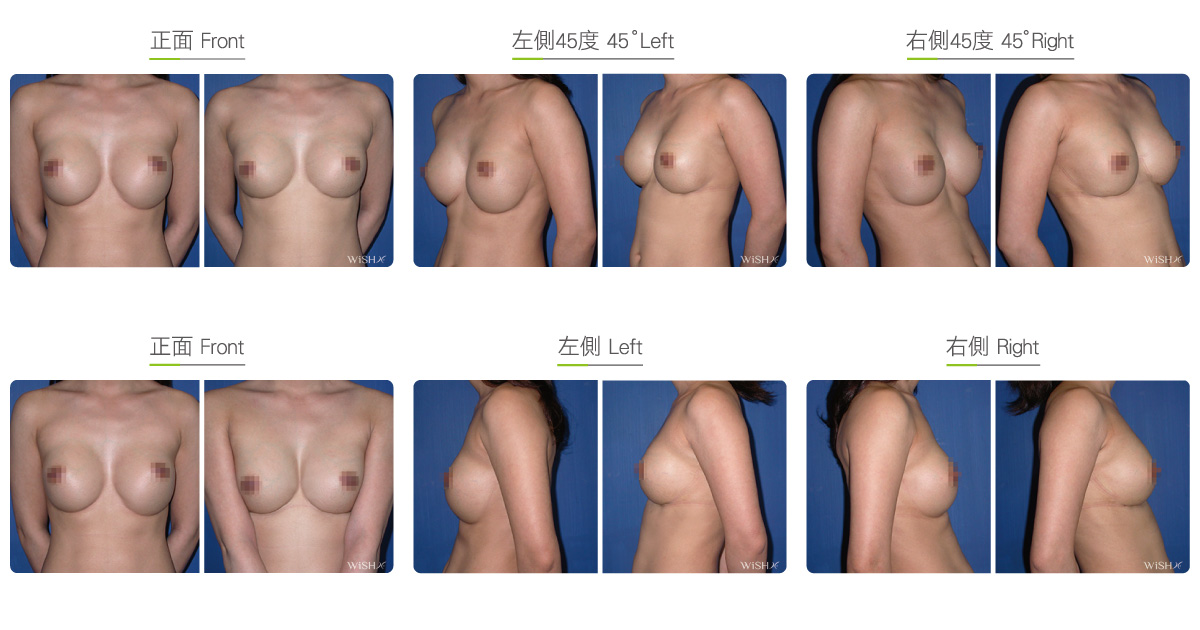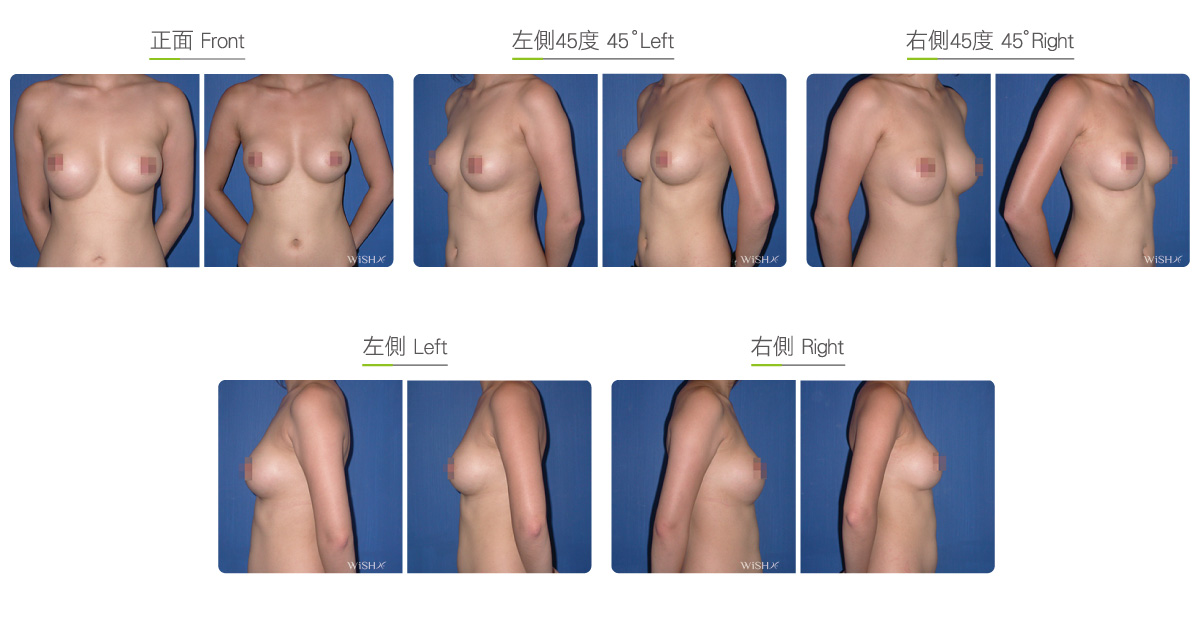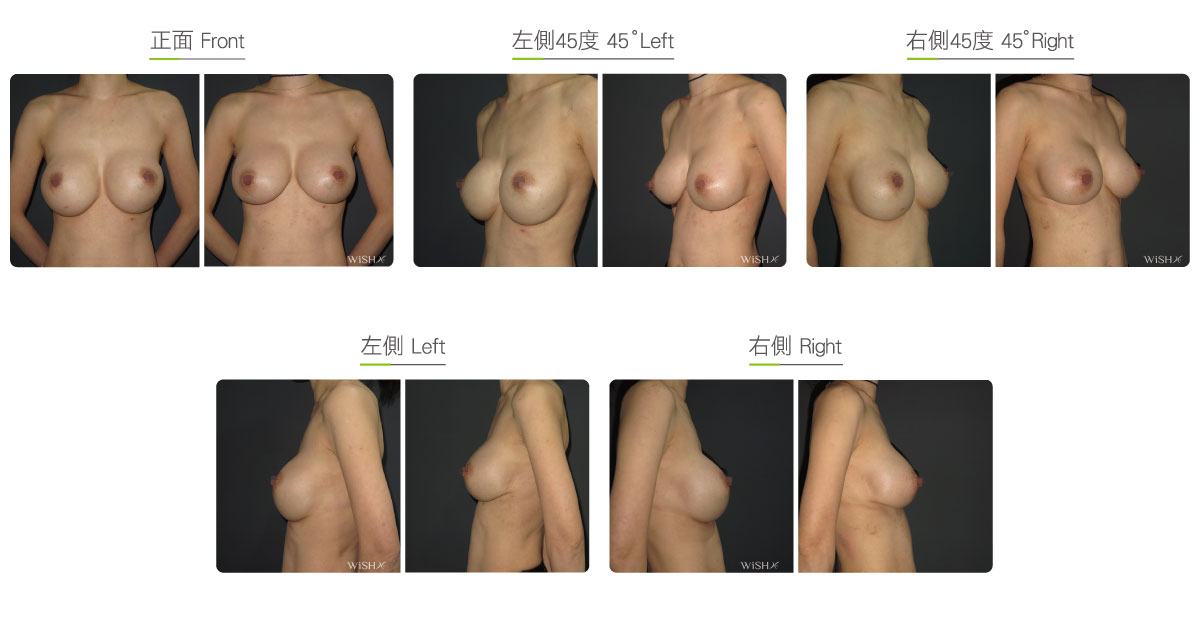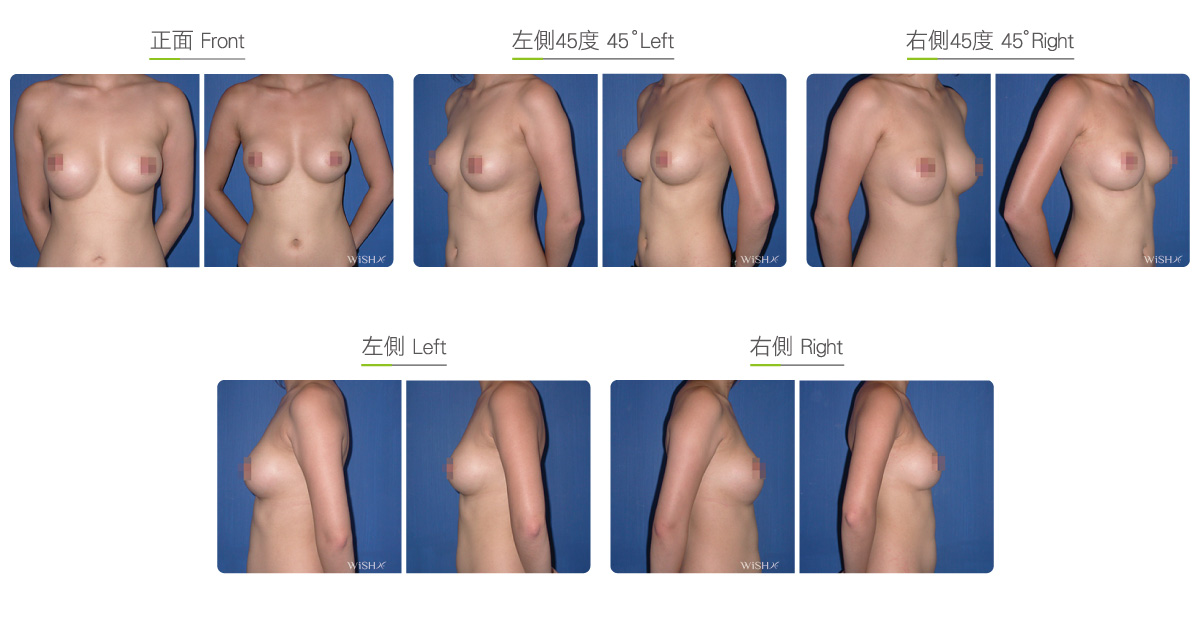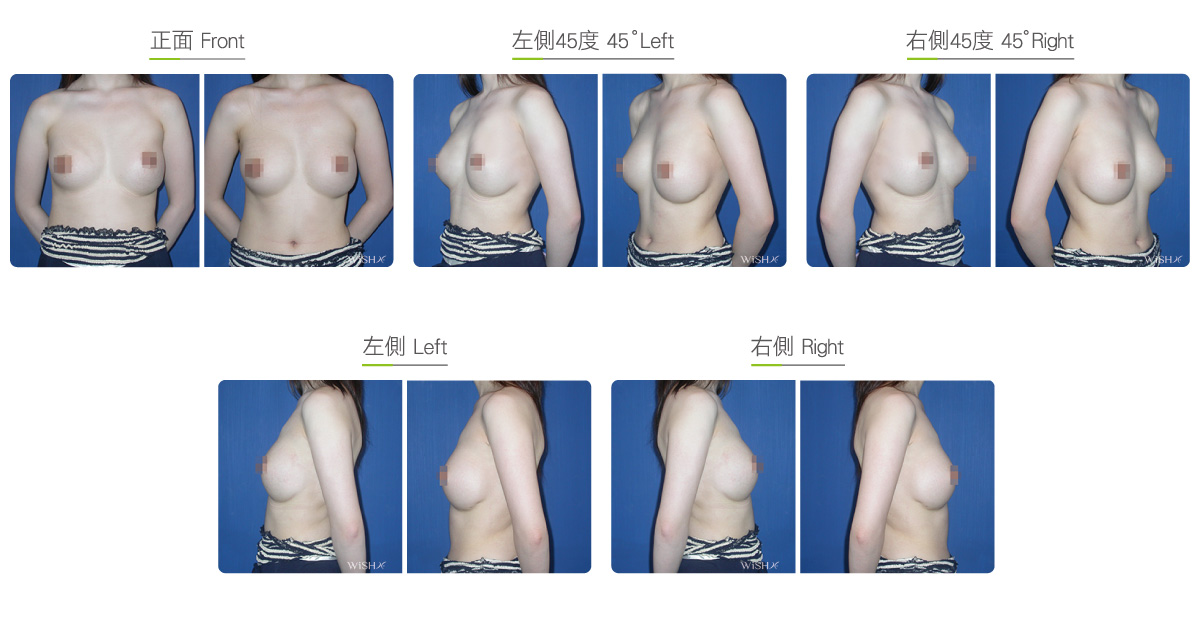Capsular Repair
This is a simple revision surgery for minor complications such as too large a pocket or loosening skin, which causes an unstable or lower riding implant position. It is also called as “pocket fixation” or “implant stabilization” procedure. Its main purpose is to correct low or ptotic implants due to saggy skin or insufficient skin support. Dr. Chuang uses the least invasive method for this surgery. This percutaneous suture technique will directly stitch the skin to reduce inner pockets and improve problems such as implant sliding, low position, uneven heights, or even implants being too centered. Special sutures are deeply planted in the skin surrounding implants to secure loose implant pockets and return implants to the normal position.
This procedure resolves implant displacement using mini-invasive external fixation with sutures. In contrast to traditional capsular repari through inframammary incision, Dr. Chuang only needs to make three to four 2-mm incisions at the loose spots and use special non-absorbable sutures to repeatedly stitch the skin and underlying tissue, resulting in an external adhesion over the internal pocket margin. The excessive pocket space can rapidly be reduced, and the implant position can be immediately returned back to normal. This procedure is advantageous in that it is minimally invasive and shows quick results. It also avoids the risk of skin incisions or unfavorable scars common to the traditional method. However, it also temporarily leaves skin with pinholes or irregular edges that would take 3–6 months to even out. Occasionally, sutures have the possibility of early loosening. Patients should be careful to not do perform any chest extension exercise in 3 months until the new pocket is well capsulized.
Surgical conditions
Duration
- Type of anesthesia: IV sedation + local anesthesia
- Type of incision: 3–4 pinholes (2 mm) in the inframammary fold
- Recovery: Immediate
- Removal of stitches: 7 days
General instructions
No food and water on the day of surgery
- Breast massage should be discontinued for 1 month postoperatively.
- Exercises that overly extend the upper body should be avoided for 3 months postoperatively.
- A push-up bra may be worn to support implant stabilization.
Ideal candidates
- Those with low implants due to poor skin support after augmentation.
- Those with low implants due to over dissection during surgery.
- Those who cannot accept excessive implant movement.
- Those with gradual ptosis due to breast aging or loose skin problem after augmentation.
- Those with too centered implants.
- Those who want the deep inframammary fold shadow to create the teardrop shape of the breasts.
Possible complications
- Temporary concavity or wrinkling of skin from needles
- Suture loosening
- Tight sensation in the breasts
- Incomplete correction
Surgical advantages
-
Minimally invasive procedure with immediate results.
-
No skin incision is needed; only small visible pinholes and no scars.
-
Normal breast appearance after internal suture absorption (in 6 months).
-
Easy adjustment of breast height.
-
“Crescent-shaped line” in the inframammary fold can be customized.
Surgical drawbacks
-
More noticeable intraoperative pain.
-
Visibly concave or uneven skin due to stitch fixations (3–6 months after surgery).
-
Sutures have the possibility of early loosening.
-
Less effective fixation for those with thicker skin tissue.

